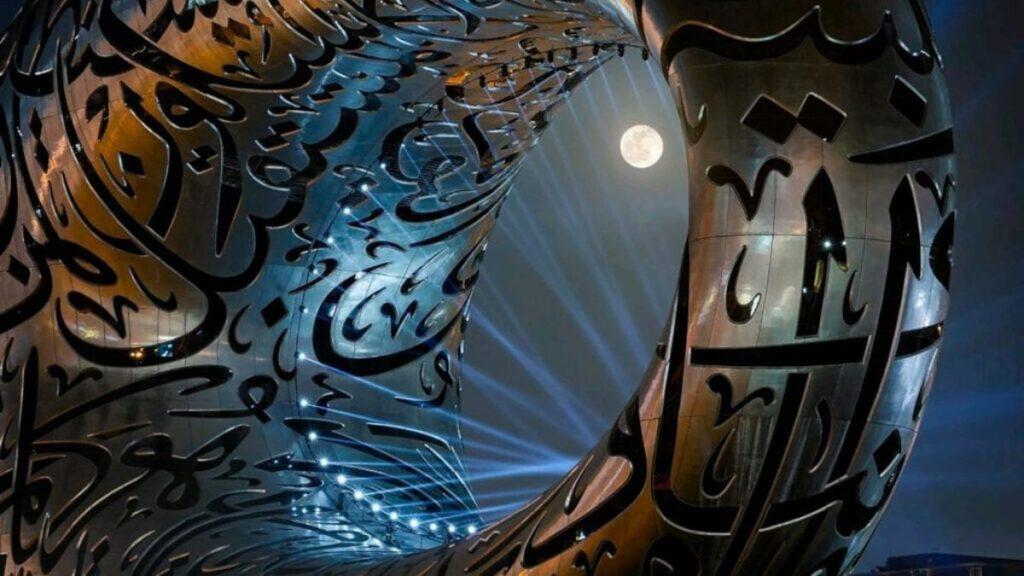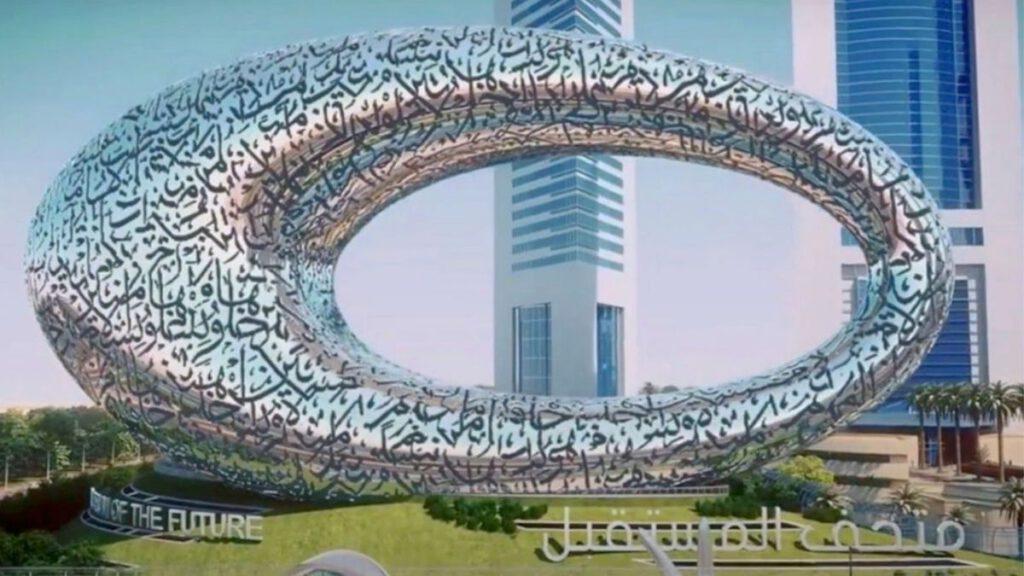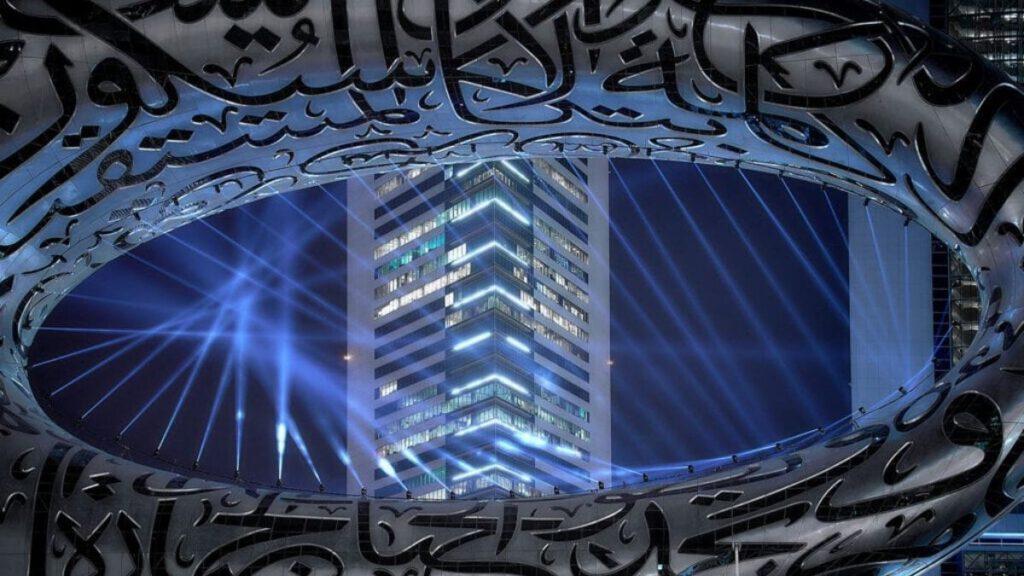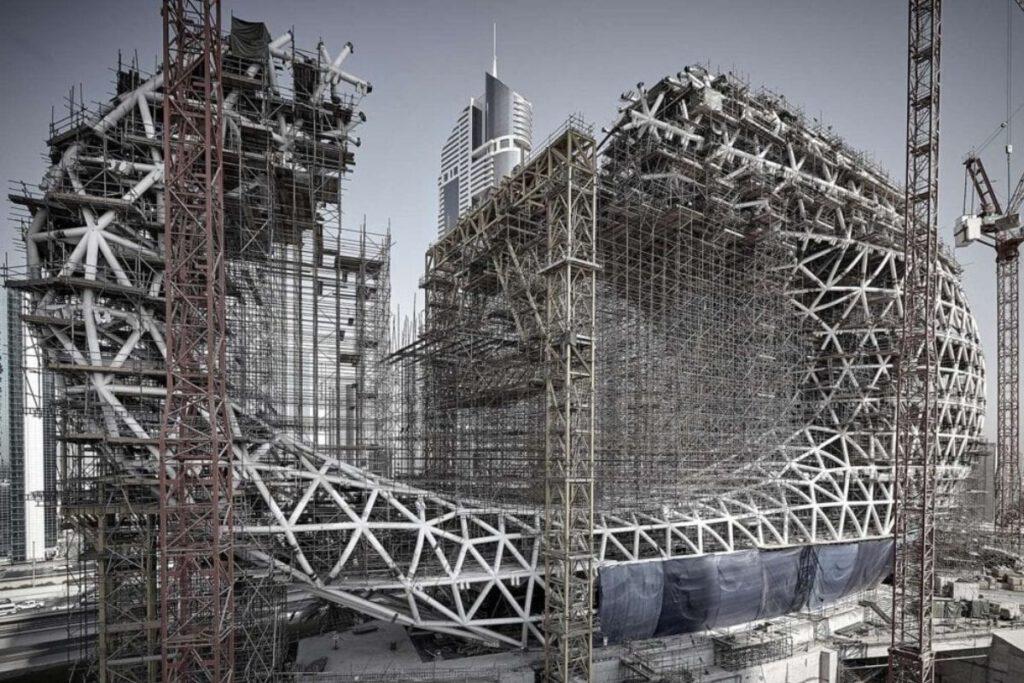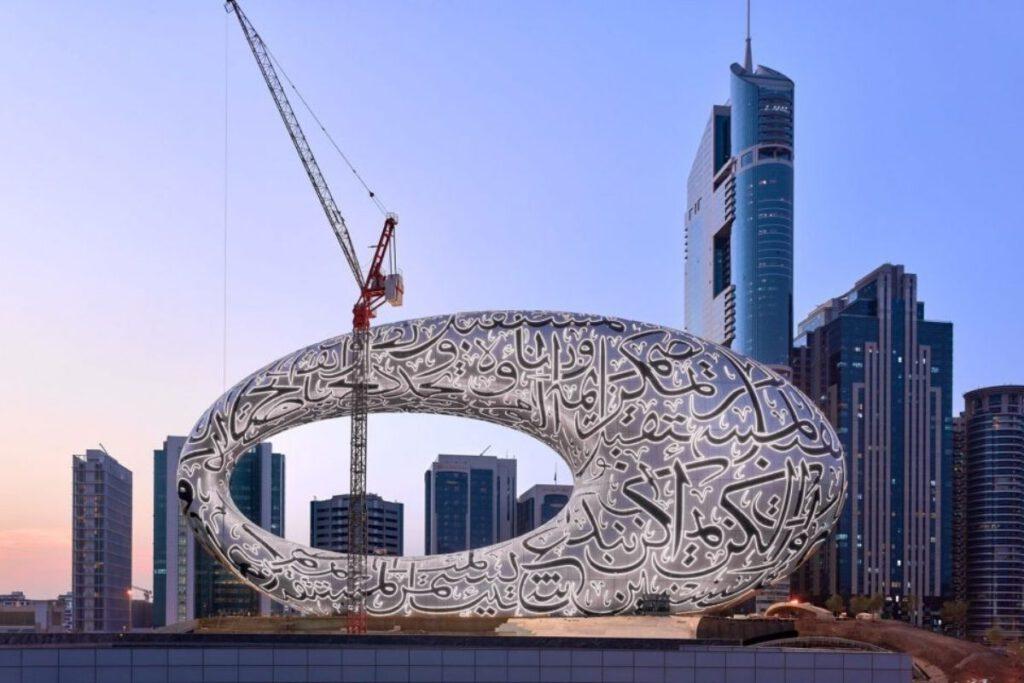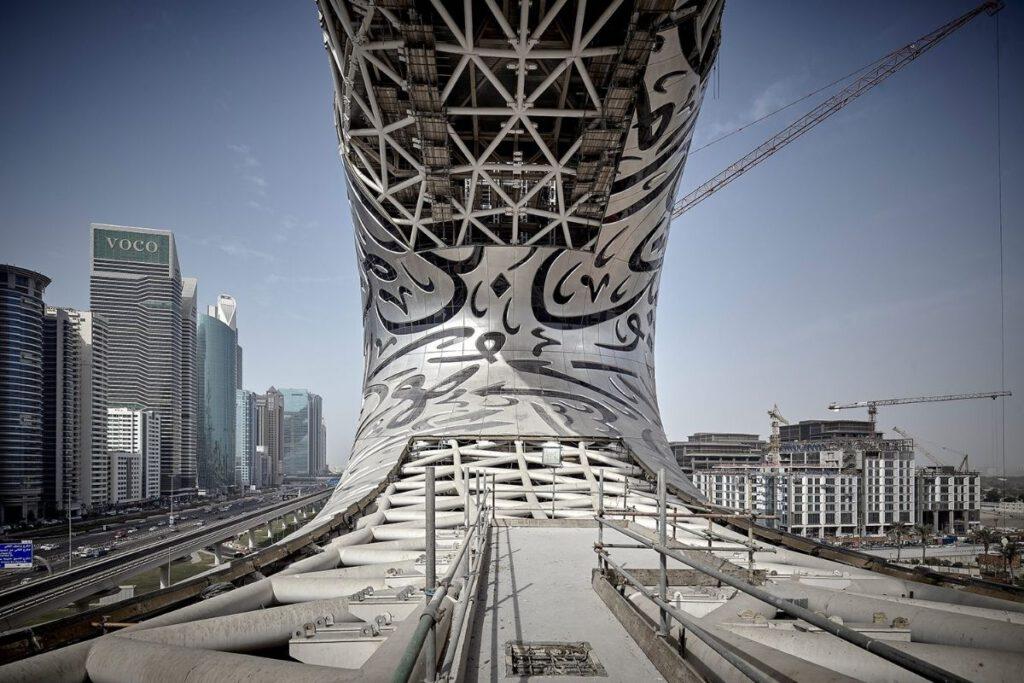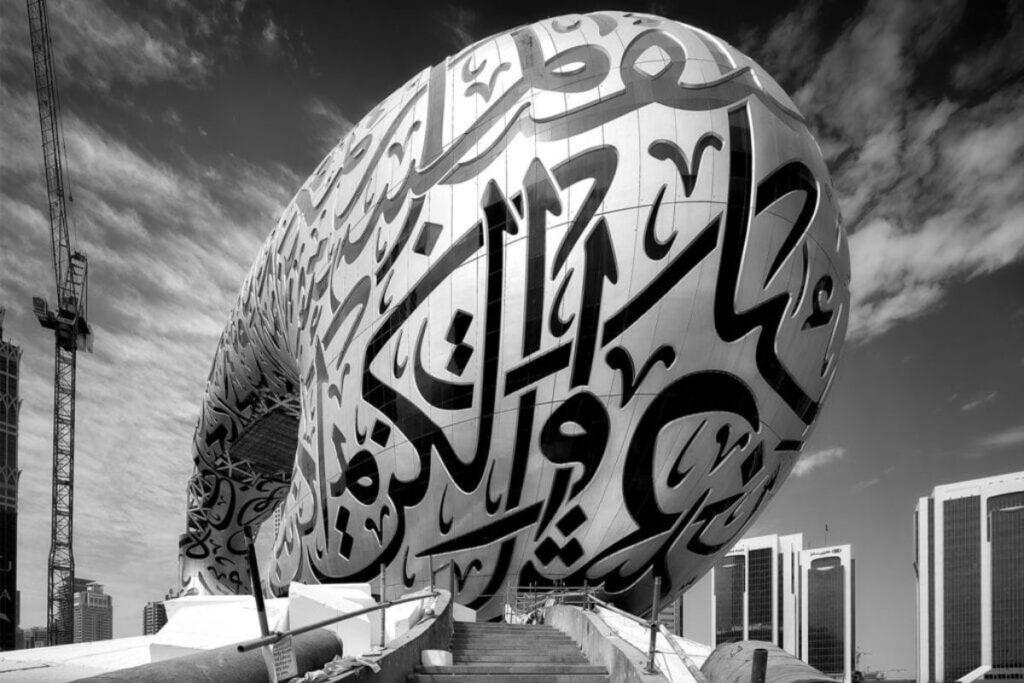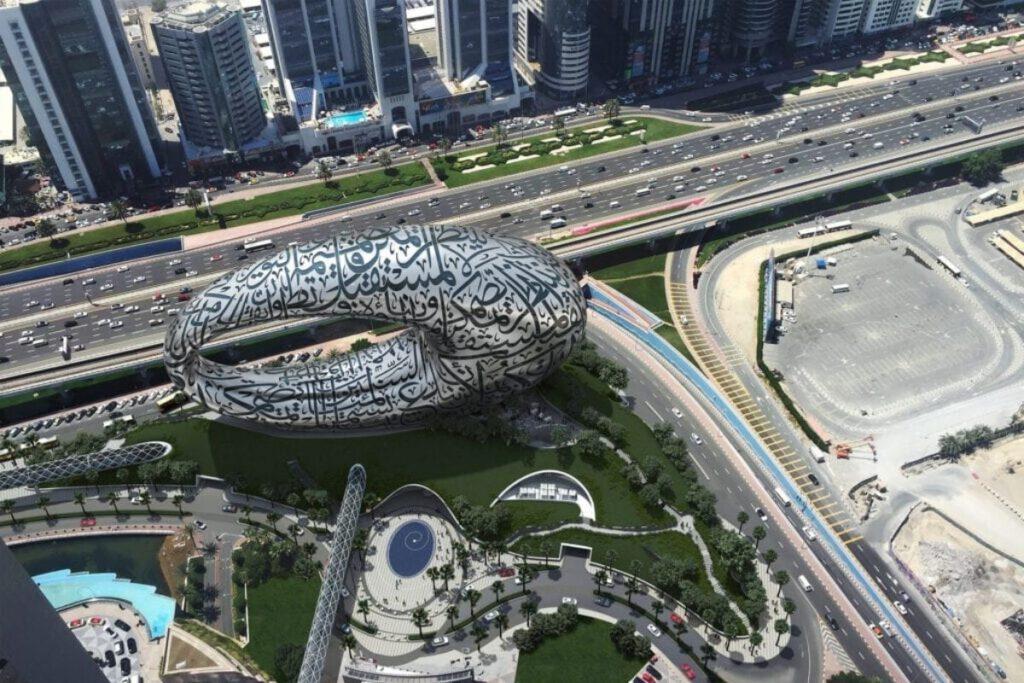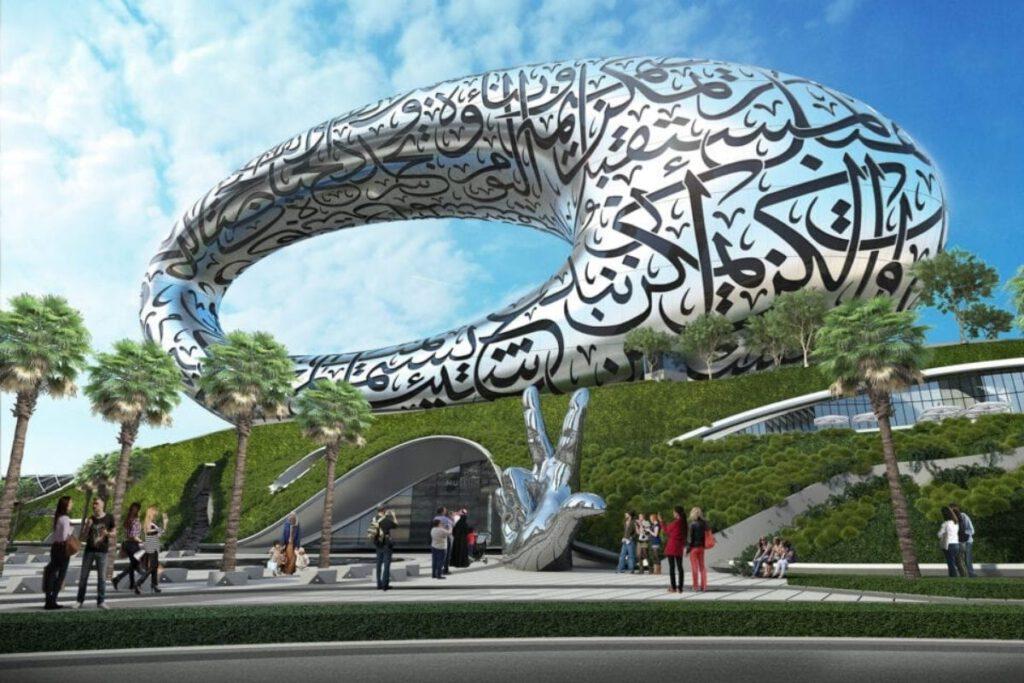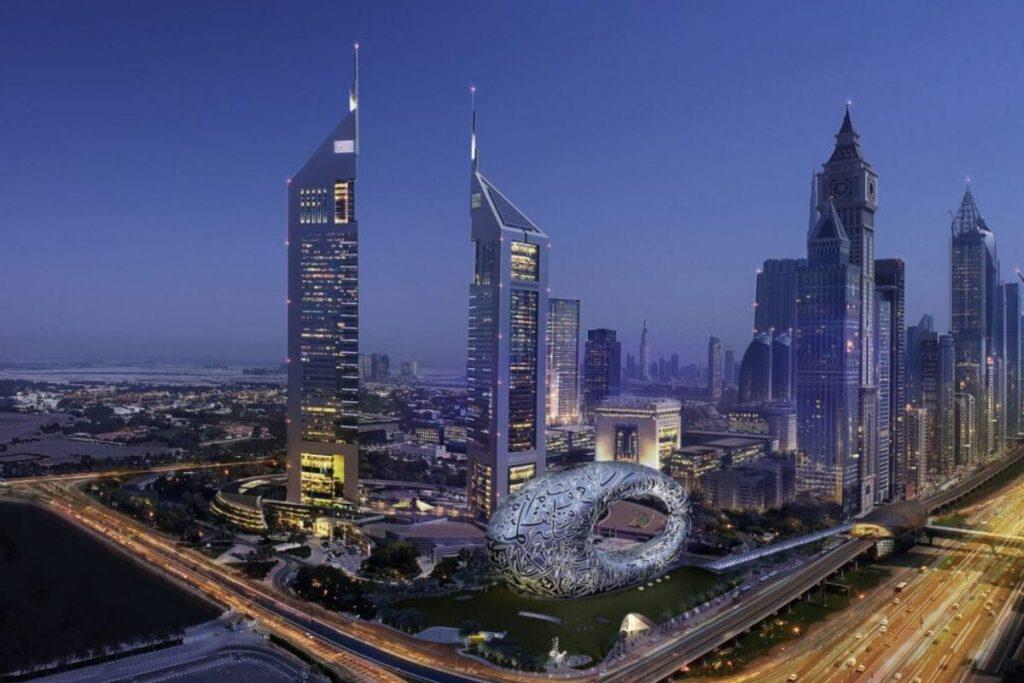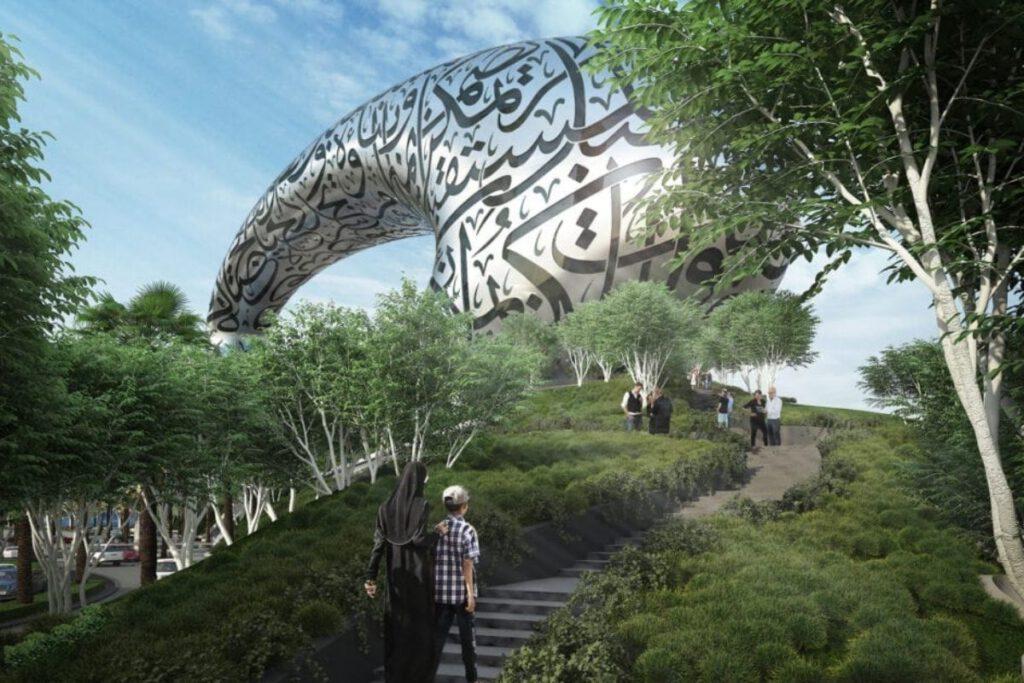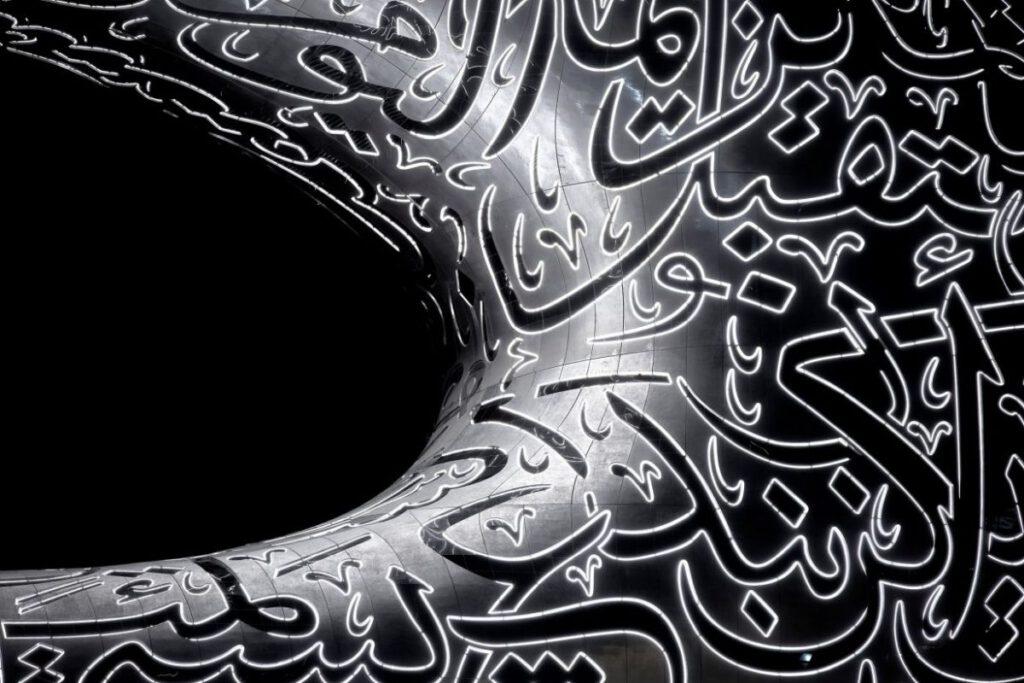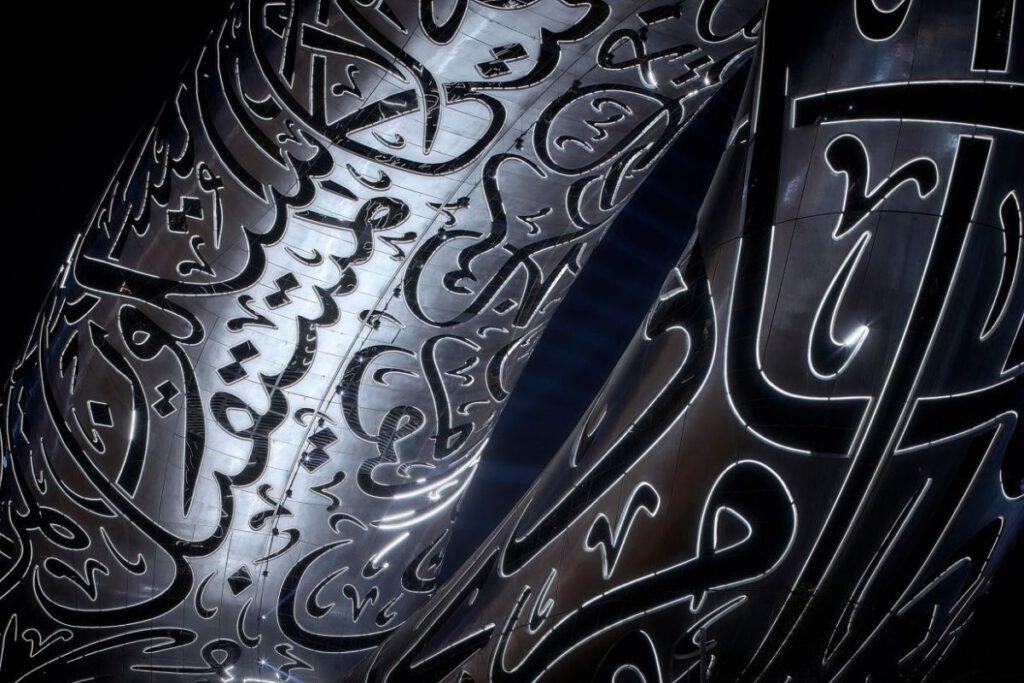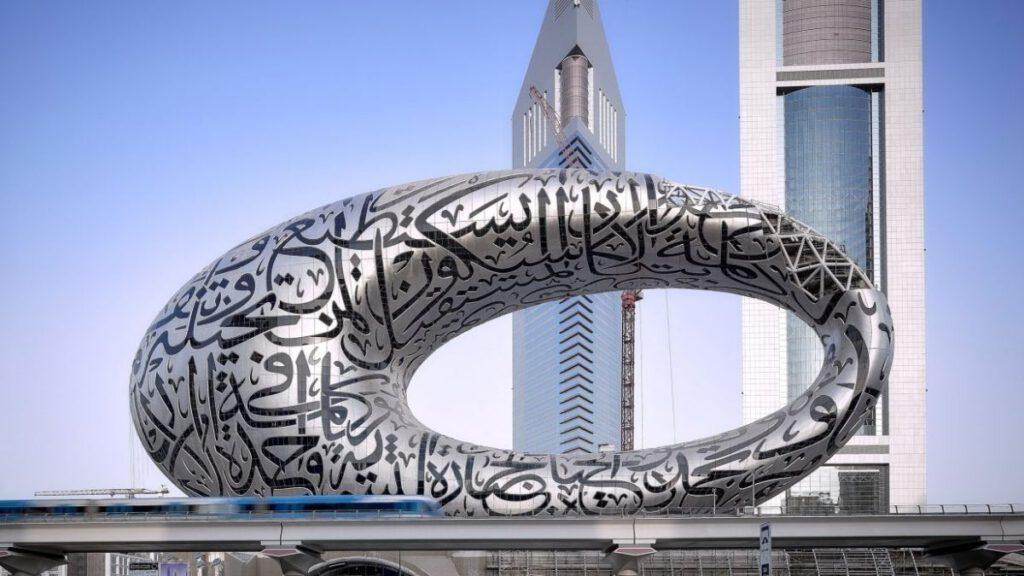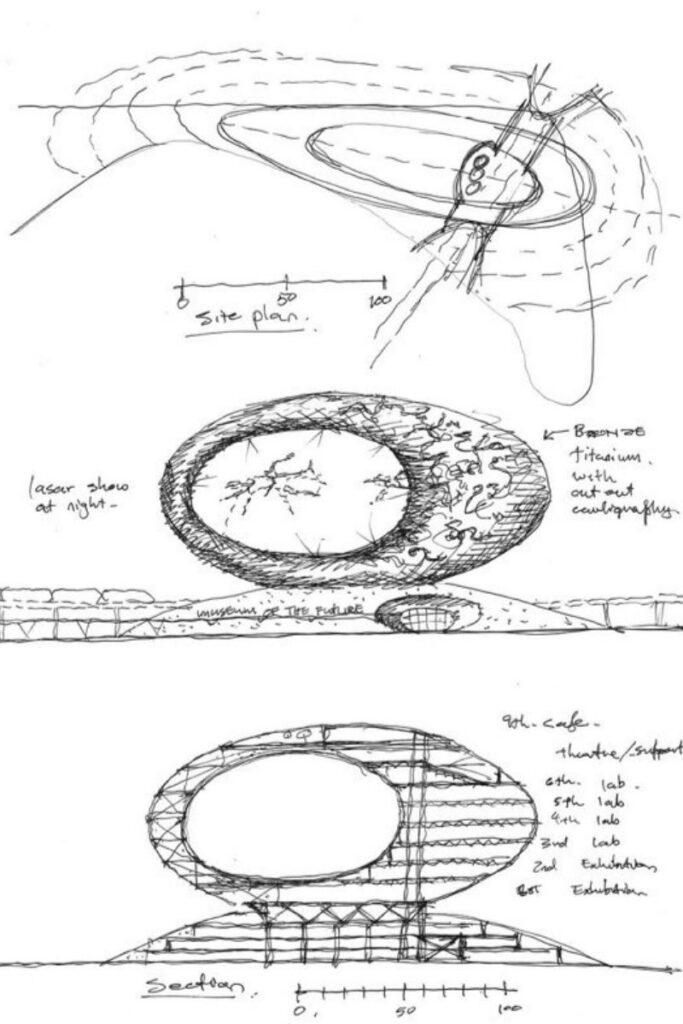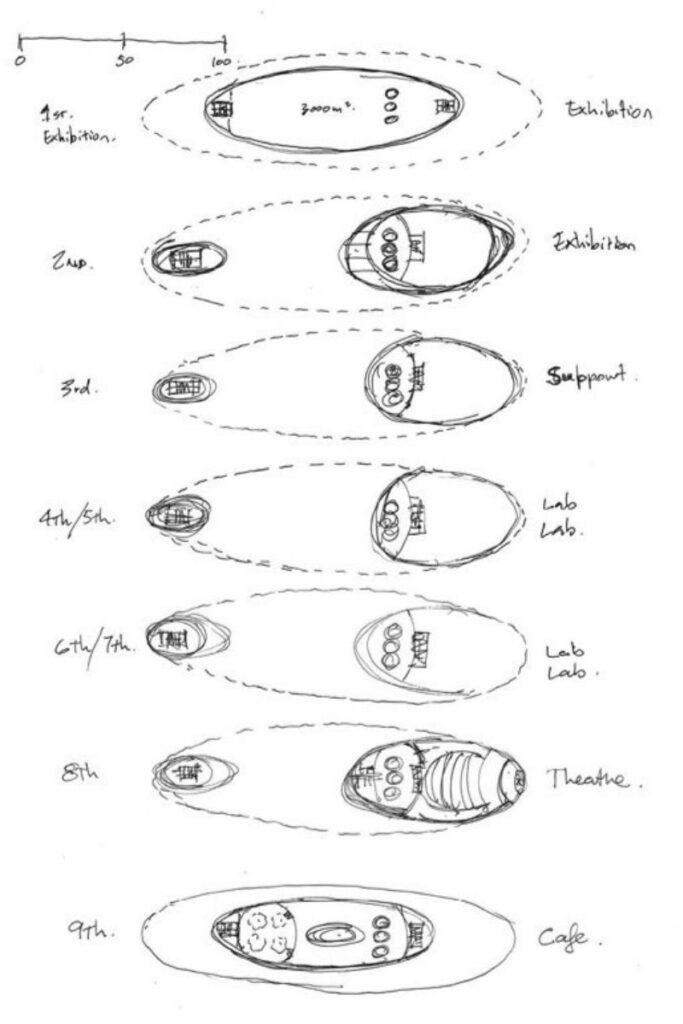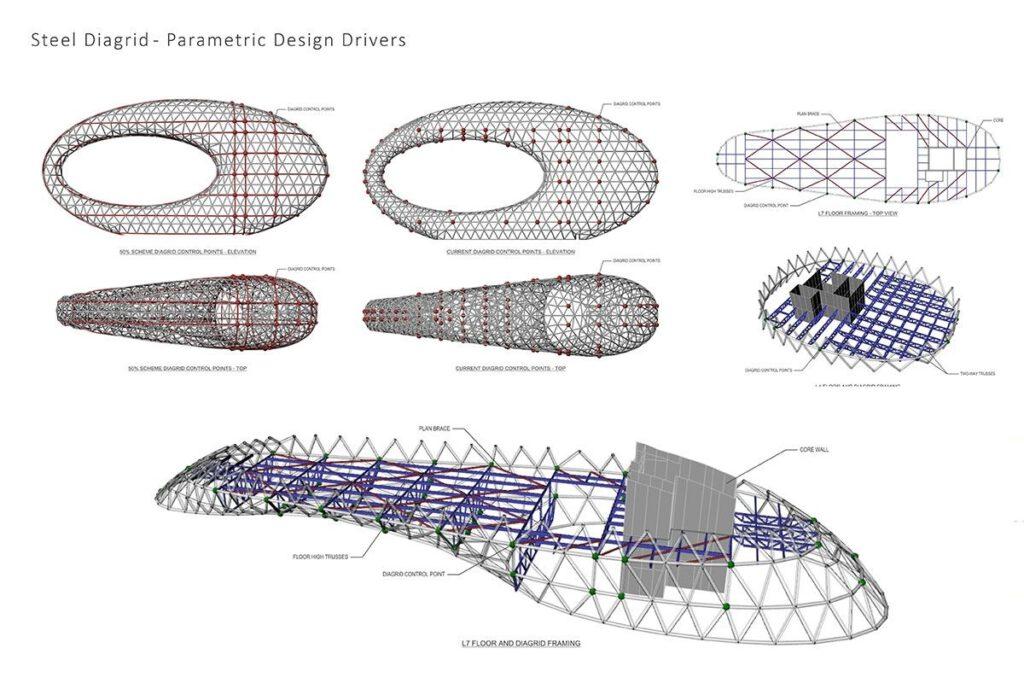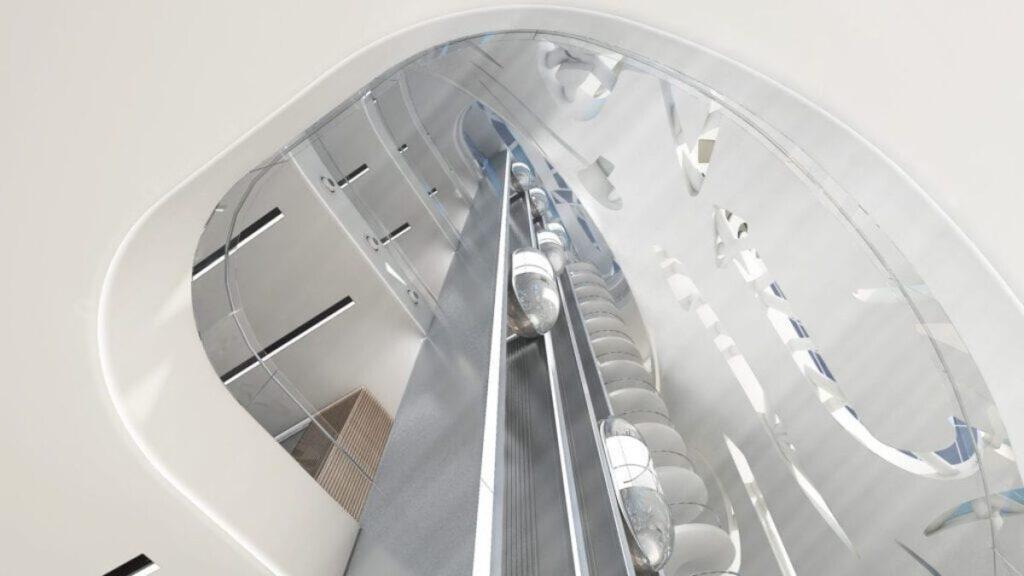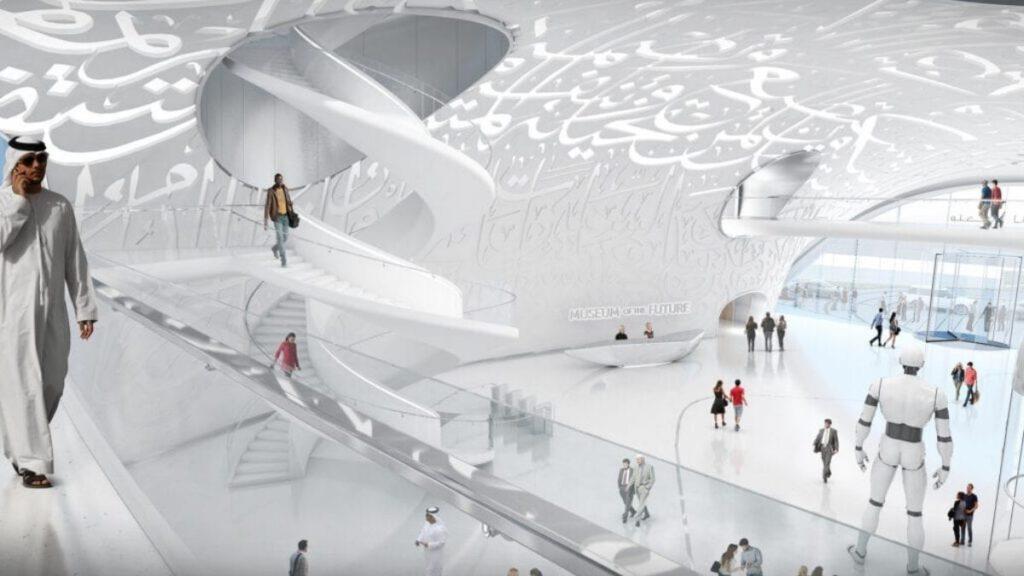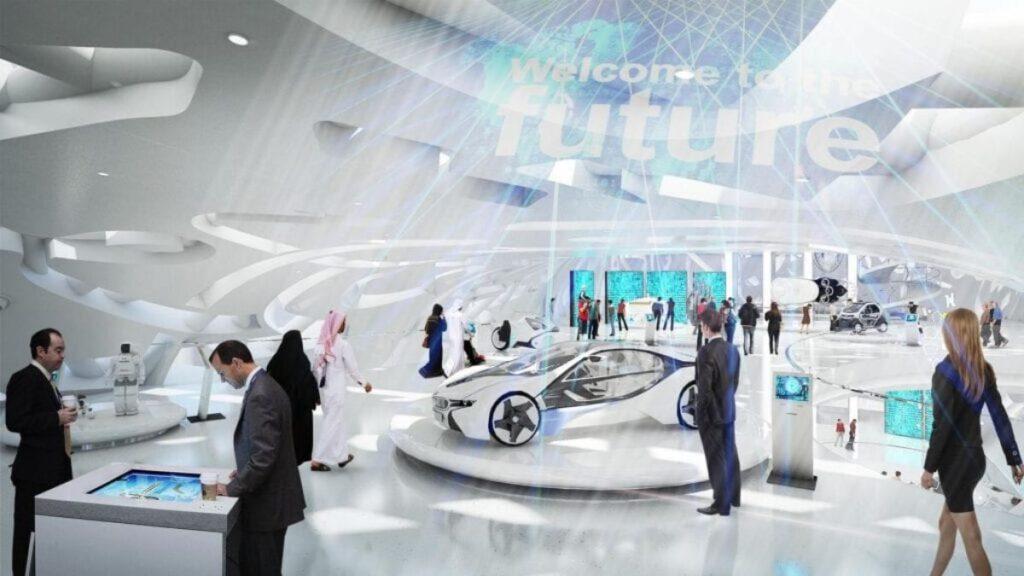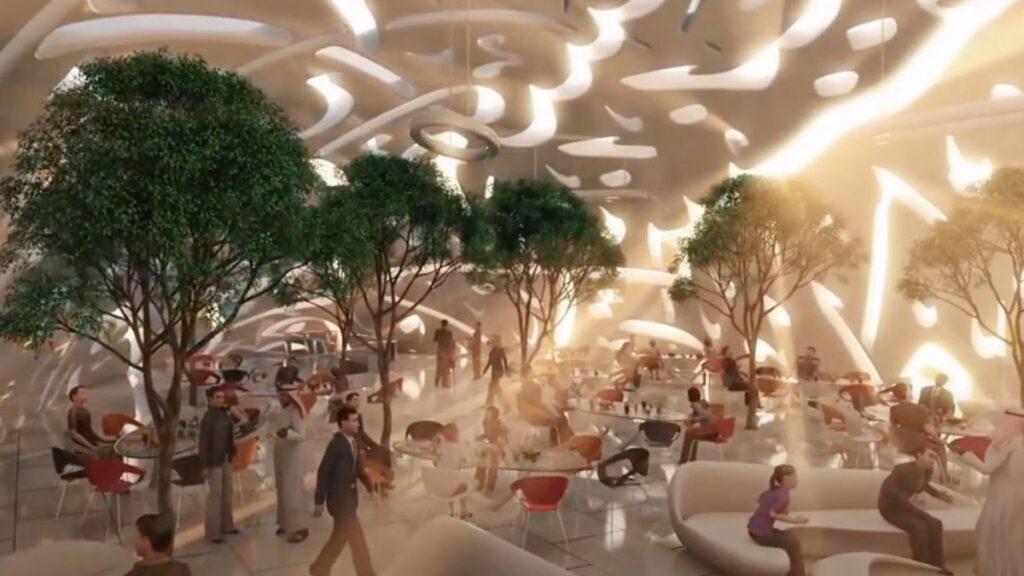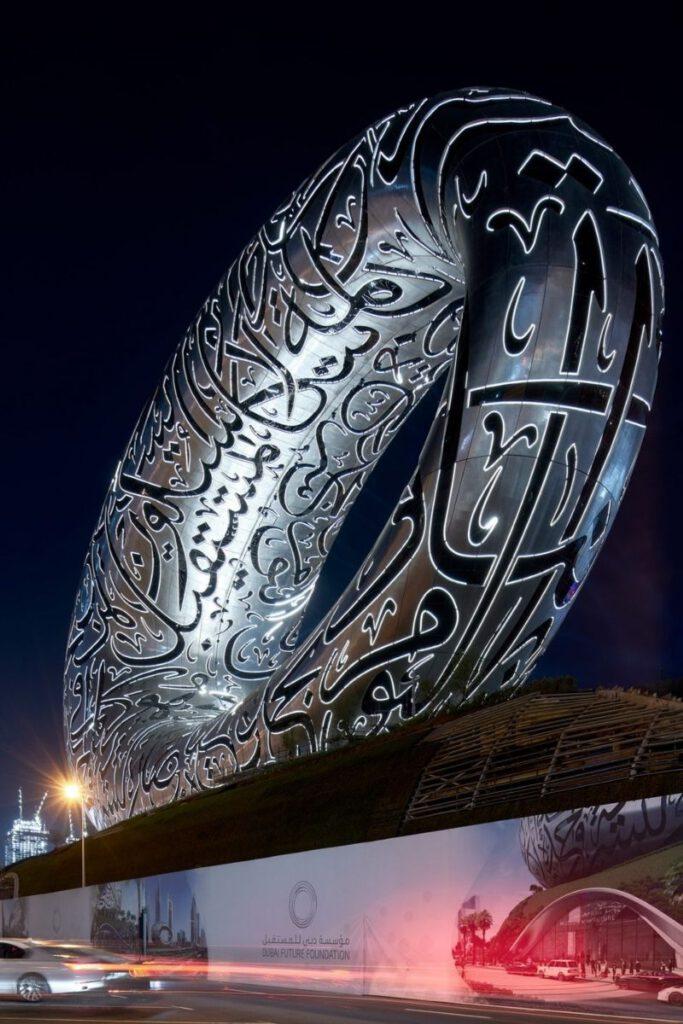Future potential with a stunning design
Dubai’s Museum of the Future is nearing completion. It is considered one of the most complex buildings worldwide, and its exterior is breathtaking.
The eagerly awaited Museum of the Future in Dubai is on the home stretch, due to open very soon. Its shell and façade have long been completed and are hugely impressive. The upper section is shaped like a torus, which is a bit similar to a doughnut.
“Windows” in the torus spell out a poem in Arabic calligraphy. The poem was written by Dubai’s ruler Sheikh Mohammed bin Rashid Al Maktoum about visions of the future.
Commissioned by the Dubai Future Foundation, the Museum of the Future is on track to become Dubai’s new calling card. And, needless to say, an eye-catching addition to the city skyline. The architects at Killa Design conceived the museum as a powerful symbol of progress while integrating elements of regional style.
“We might not live for hundreds of years, but the products of our creativity can leave a legacy long after we are gone. The future belongs to those who can imagine it, design it and execute it. The future does not wait. The future can be designed and built today.”
Equation with variables
From a philosophical perspective, the physical building reflects the architects’ understanding of the “future”. By contrast, the “empty void” in the torus represents the unknown. All that is still open and undecided. Everything that motivates people to strive tirelessly for innovation and discovery.
The prime location on the green hill beside the Emirates Towers also represents solidarity, durability and a firm rooting in time, space and history. However, the hill also offers a discreet, unobtrusive means of raising the building above the subway line.
The Arabic calligraphy that covers the building symbolizes the human passion for creative expression and the arts.
Bringing the design to life was a challenge on many different levels. This was not only due to the building’s unusual shape and complex façade but also to the client’s stipulation that the building should meet the requirements for LEED platinum certification.
Over 1,000 GRP panels
These challenges were handled expertly by global engineering firm Buro Happold, which oversaw the entire design and building process digitally. More than 50 design decisions were made in this way based on sustainable aspects.
Specialized engineers created their own parametric modelling tool to evaluate options for the museum building’s structure, which is what made the torus form possible in the first place. The ingenious structure allowed the engineers to install more than 1,000 glass-reinforced plastic (GRP) panels that were refined with stainless steel.
Designed entirely using BIM
Tobias Bauly, project manager at Buro Happold, has been quoted in the media as saying that “full digitization was essential for delivering such a complex project”. Using Building Information Modelling (BIM) made the entire design and construction supervision process considerably smoother and far more integrated.
The CO2 footprint was also kept to a minimum by using passive solar architecture, energy- and water-saving technical solutions, recovery strategies and other integrated renewable energies. At night, the Museum of the Future is illuminated with LED solar lamps.
The client’s aim is for the Museum of the Future to become established as a visionary cultural institution, a centre for creativity and tolerance. It is also to host exhibitions and theatre, and serve as a place of research and learning.
Architects: Killa Design
Developer: north25
Client: Dubai Future Foundation
Structural engineering: Buro Happold
Emirati calligrapher: Matter bin Lahej
Incubator for ideas and designs
Inventors, designers and researchers will come together here to discuss cultural, philosophical, social and spiritual matters, and to present new technologies.
For this purpose, there is an exhibition and administration area over seven floors and on the three podium levels (including a 420-seat auditorium) as well as in the restaurant, in the café and in the lobby.
There are plans to hold both permanent and temporary exhibitions exploring areas such as outer space (and the possibilities it offers), ecosystems and resources, health and safety, and biotechnology. Another area of focus will be future technologies in the fields of food, energy, water and transport. And there will also be a special area devoted to the managers of tomorrow: children.
Text: Linda Benkö
Translation: Rosemary Bridger-Lippe
Images: Museum of the Future, screenshots of MOTF videos, Killa Design, Phil Handforth, buro happold
